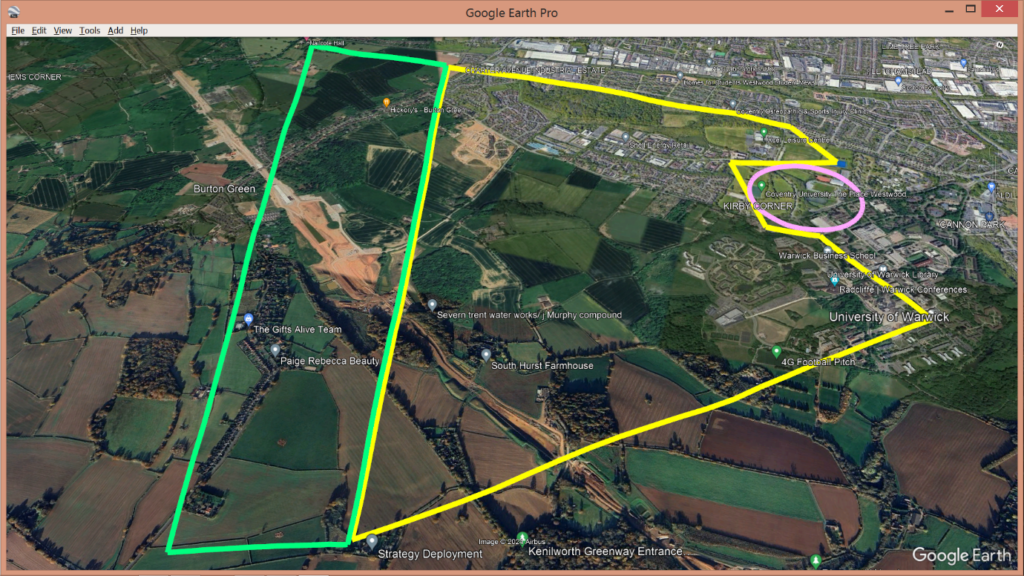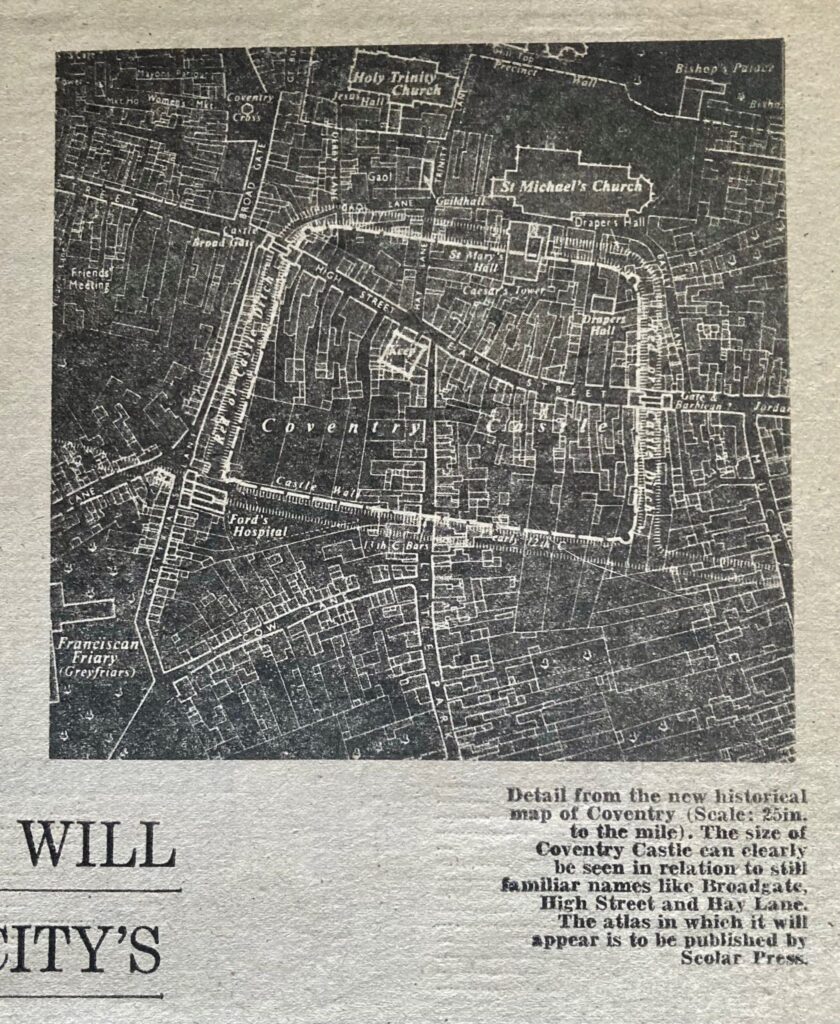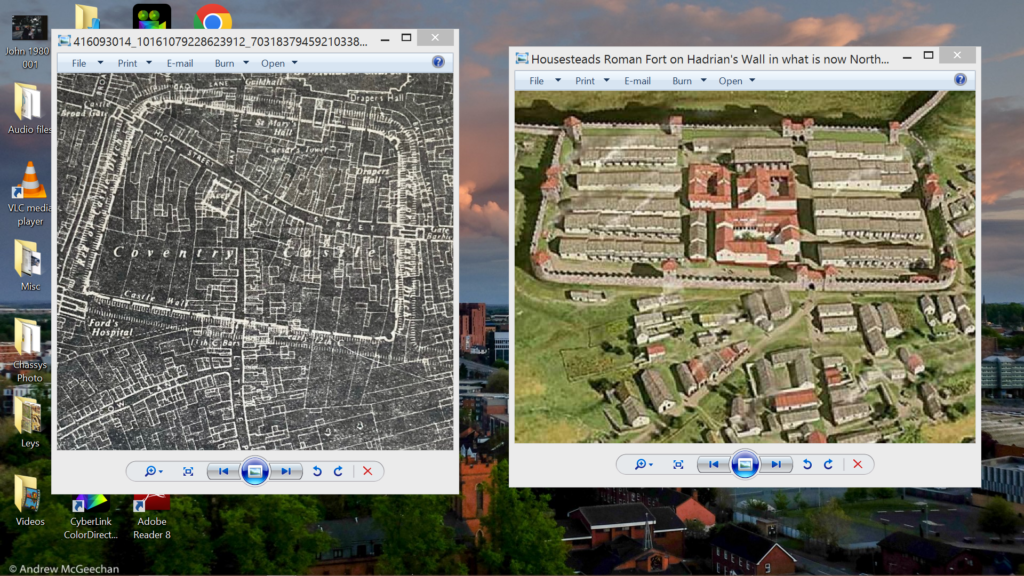Coventry Society member, Andrew McGeechen, recently attended a meeting of the Westwood Heath History Group and was inspired to write this article about the history of that area. Andrew writes….
Imagine going to a talk on Westwood Heath, a sleepy suburb of Coventry, only to realize that the whole name tells a remarkable story, that is one of a substantial Iron Age settlement, one that found itself on the wrong side of history, and was burned down as reprisal for an uprising we associate with East Anglia nearly 100 miles away, and its surrounding farm fields left to return to heathland.
The talk in question centred on the Forest of Arden and its colonising during the Anglo-Saxon period.
Questions from the audience hoped to find some connection with the area’s name and those very Anglo-Saxons.
My suggestion, being an audience member, was that the answer lay in plain sight, in that the wood would be to the west (at Bockendon) and the heath was the ground in between there and Kirby Corner.
As an example, Eastern Green is on the west side of Coventry, but, is on the eastern side of Meriden so telling us its actual origin.

My suggested layout: Looking north with the west wood to the left (green) dissected by HS2 works. The heath/farmland to the centre (yellow). The settlement (pink) at Kirby Corner.
I had been studying the region for links to the Stone Age (article to follow) so was myself surprised to find out a few years back, that an Iron Age settlement had sat broadly where the roundabout at Kirby Corner is now situated.
Now a problem does arise with the name “Kirby” as that is Danish and would belong to the east of England in what was known as “Danelaw”, and there are 17 out there, so why it should overwrite an Iron Age site this far west would seem like a mystery, unless we split its name in two. The word Kir means “Walls” from “Kir of Moab” (Old Testament) or Kir-herseth the old Hebrew name means “Wall of Potsherds” or Kir-heres “City of Potsherds” in ancient Moabite, and “by” means “Place” so it may cognate as “Walls Place” essentially meaning ruins, and would have been named thus, during the spread of Christianity, albeit still with an air of doom hanging over it all those centuries later.
Alas, this does not tell us the Iron Age name of the town.
Archaeology tells us about “Banjo enclosures” and “Round houses” at Kirby Corner, 14 were found in one limited area of the site, and one estimation (Dr Stephen Hill, Warwick University) extends it to as far as 200 buildings covering the wider surroundings.
Signs of Silver working where also found along with a crucible of a type not found anywhere else in Britain. This could indicate coin making or a silversmith on site, making it a place of some importance.
Taken as a whole that would constitute a town equalling Rate (Iron age Leicester).
“We live and die in these towns”Coventry band “The Enemy” 2007
Further to my previous article (The Roman origins of Coventry, March 2024) this town at Kirby Corner would belong to the “Cornovii” people, whose territory covered the area from modern day Coventry, up to Chester and over to their capital at Wroxeter in Staffordshire.
In the early Roman occupation they may have sided with the dissident tribes led by the Iceni Queen Boudicca. We know that ended badly in 61 AD, their captured horses were broken-in at the Lunt not very far to the east, and there would have been a period of retribution, the extent to which we can only guess, although the signs of burning at this site led City Archaeologist Margaret Rylatt to suggest the whole place was burnt to the ground.
Thereafter we can theorise the population would have been dispersed, and the farmland left to return to heathland. That, along with the wood over to the west at Bockendon/Crackley, leaves us with “West-Wood-Heath” whereas the subsequent Romano-British resettlement seems to have moved to a hilltop at today’s Broadgate. Sadly today, plentiful Roman finds are barely referred to, and a notable walled market town – or “Venta” – is clearly visible on maps but wrongly labelled as a Norman Castle, even though it had a “Caesar’s Tower” taking us back to its Roman roots.


All opinions are my own other than those by named people. Andrew McGeechen. June 2024
